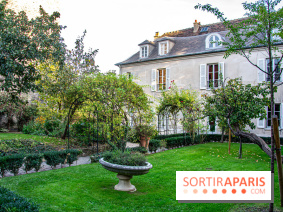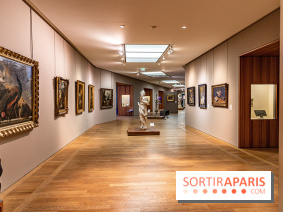Our Green Composition dates from the "Carré years" (1944-1961), the period during which André Lanskoy collaborated with the Louis Carré gallery. He developed a pictorial language in which each work is the result of a struggle, a spiritual combat between the painter and the material. This manifested itself in a dominant tonality: one painting = one theme = one color.
Opus 64 B. The canvas is almost 2 metres high. The painter has brushed it energetically, with a broad gesture. Black and blue lighten the underlying colors.
"All the paintings of the 50s sound like thunderclaps," says Georges Boudaille. These were "the glorious years", according to Michel Ragon. The critics were dithyrambic. In 1954, Gérard Schneider represented France at the Venice Biennale.
Jean-Paul Riopelle also took part in the Venice Biennale in 1954, representing Canada. In his abstraction, he claimed a different relationship to nature than André Lanskoy. For him, "contact with nature is documentation" (quoted in Riopelle, 2006, cat. expo., p. 142).
A Parisian by adoption, Jean-Paul Riopelle moved to Paris in 1946. When asked about the immense forests of Quebec, he warms up and responds with the leaf of a tree. The artist is a stickler for detail. He observes meticulously, interested in the hidden appearance of things. In the same way, he superimposes pictorial techniques. Knife painting, drips, brush strokes and brushstrokes create networks of lines that may or may not be untangled.
Location
M.A.K. Gallery
24 Avenue Matignon
75008 Paris 8
Prices
Free
Official website
www.makgalerie.com
Instagram page
@m.a.k_galerie
More information
01 44 18 73 00 artparis@makgalerie.com Open Monday 10am-6pm, Tuesday-Friday 10am-7pm, Saturday 11am-7pm Closed Sunday and daily between 1pm and 2pm















